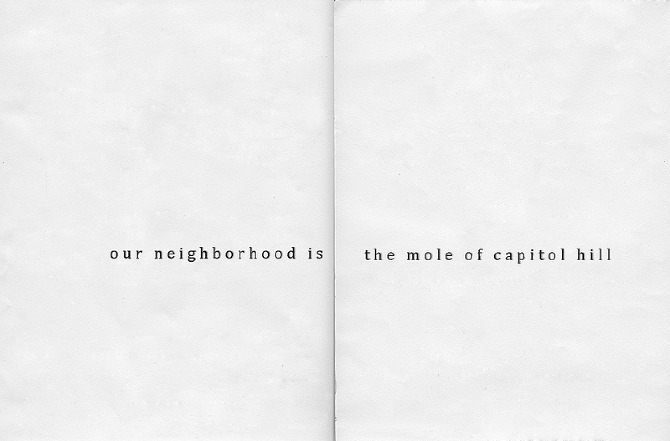|
The Breadcrumbs widget will appear here on the published site.
The Mole of Capitol Hill10 Blocks represents the distance of several low-income housing communities in Washington, D.C. to the US Capitol building, a symbol of our country’s prosperity. As the capitol of our country, DC should stand as a model for all of the hope and potential our collective power can encourage and facilitate. Instead, it has come to represent the growing disparity between the people of our country, and its governing body. Neighboring monumental symbols of power, freedom and equality, are communities living in abject poverty, located in a city where one in 20 residents have HIV. The project features the stories, hopes, and frustrations of community members who all live in view of the capitol building but whom are overwhelmed by low-paying jobs and the struggle to have their most basic needs fulfilled. Stories reveal the threat of drug addictions, violence and health concerns which add stress, distraction and danger for the youth. In the face of these constant issues, how can one begin to access and understand the ideals that these monuments profess? What semblance of the illusive ‘American Dream’ remains? '10 blocks' incorporates both the voices of today's youth as well as the oral histories of senior citizens. Many of these individuals lived in D.C. through segregation, the race riots, the drug/crime/AIDS epidemics, white flight, and now, are not only struggling to keep their homes and salvage their communities due to gentrification, but find themselves, more often than not, alone and isolated, unable to share these incredible histories that they have witnessed and survived. In our current economic and political climate, these symbols fail to represent the reality of America. This reality is one where millions of people go without decent housing, safe streets, good schools and nutritious food, while living under the shadow of the façade our country has built for itself. If these injustices exist within such a short proximity of one of our greatest symbols, we must question the greater tragedies and injustices that are occurring every day. CommentsComments are closed.
|
|









